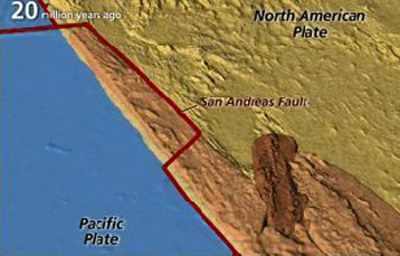
Channel Islands geology tells of rich history
CHANNEL ISLANDS–Besides the titillating history of the Channel Islands, many visitors to the area don’t know that the present-day masses were once positioned in another location quite a time ago.
Geologists commonly refer to plate tectonics to describe this Pacific Ocean phenomenon. This is a process throughout time where landmasses shift within the Earth’s lithosphere. The globe is devised of massive moving puzzle pieces, marine and land alike.
Off the coast of California’s Santa Barbara lies a slew of islands that make up the modern-day Channel Islands National Park. They are named Anacapa, Santa Cruz, San Miguel, Santa Rosa, and Santa Barbara islands.
| The San Andreas Fault runs through Southern California, including just east of the area where the Channel Islands are located (Map courtesy of the National Park Service). |  |
“The land mass underwater goes deeper than what’s visible but it seems to keep pushing up,” said Sabine Faulhaber, a National Park Service volunteer at the park since 2004.
The islands are primarily made up of sediment rock, synonymous to sea rock. White areas can be seen in and around the high altitude hills and mountains. The rock under the sea of the islands goes further down than the rock exceeding sea level.
“The North American plate and Pacific plate grind together and push up the land,” said Channel Islands Park Ranger Bill Faulkner.
Most of the plate movement is due to the fact that California is a hyperactive magnetic landmass.
“In 30 million years, the uplift will eventually stop. At that point, erosional forces will take over,” said Faulkner.
The islands’ ecosystems won’t be affected by the land movements. In the far future is when the islands will undergo major geological changes, according to Faulkner.
The Channel Islands National Park offers a myriad of methods for educating the public on this phenomenon. Information can be obtained from the Channel Islands Visitors Center, from park rangers and park volunteers.
For more information on the islands visit http://www.nps.gov/chis/.

Comments are Closed